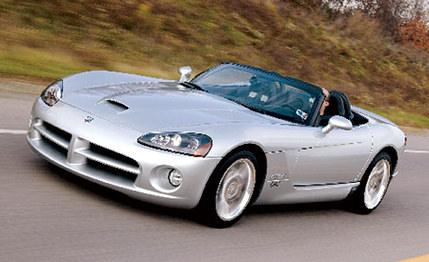
 Specialty File
Specialty File
Here was our first thought after planting the right pedal in Racing Solution's 690-hp modified Dodge Viper: Yoweee!
Possibly you were expecting something a little less hysterical from seasoned drivers like us, but come on, it's 690 freaking horsepower. What would you be thinking?
This latest thrill ride came thanks to Gerald Cashiola and Jason Calzada, owners of Racing Solutions, Inc. (RSI). Sounds like Cashiola and Calzada just stepped off the set of The Sopranos, but in fact, they hail from cowboy country: Houston. Before opening RSI in 2001, 50-year-old Cashiola built up a variety of automotive repair businesses that he still owns. Calzada, 31, has been modifying Vipers for nine years. Cashiola runs the shop, and Calzada builds and develops the engine package.
Although Racing Solutions modifies a variety of high-performance cars, our first experience with the company came via the aforementioned Viper and its monster motor.
The 690 horsepower resulted from RSI's $24,900 "head and cam" package, as Cashiola calls it. The price includes a higher-lift-and-duration cam, ported cylinder heads, new valves, lifters, springs, and rocker arms, as well as new headers, catalytic converters, the exhaust system, an aluminum flywheel, four-point seat harnesses, and a shift indicator. It also comes with a three-year/36,000-mile warranty. Since a stock Viper makes 500 horsepower, each of the new ponies costs $131.
As you might guess, lack of traction is the biggest hindrance to laying down rocket-fast acceleration times. Getting off the line is a delicate balance of giving the tires only as much power as they can handle.
There's so much torque (a claimed 680 pound-feet at 5100 rpm versus 525 at 4200 for the stocker) that at any point in the rev range an overeager right foot will send the tires into destruction mode.
We were aided by the engine's smooth power output, but still, we blew a lot of starts with wheelspin. Our best efforts yielded a jack-rabbit sprint to 60 mph in 3.3 seconds—0.6 second better than the stock car. It ripped to 100 mph in 7.2 seconds (versus 8.5 for the stock Viper), and the quarter-mile flashed by in 11.4 seconds at 128 mph (the stocker did 12.1 seconds at 121 mph). Although these numbers are certainly strong, they're about equal to what Hennessey's modified Viper ran (October 2003). That car supposedly had 600 horsepower, and we think that's probably closer to what the RSI car produces.
Since the suspension and tires were unchanged, we weren't surprised that the RSI car pulled the same 1.00 g on the skidpad as the stock Viper.
What those numbers won't tell you is how scary easy it is to double any highway speed limit. The RSI only needed 10.1 seconds to hit 120 mph and 13.5 seconds to clear 140. The rumbling exhaust, instant throttle response, and rifle-blast acceleration are so seductive that one's driver's license should automatically be placed on the endangered species list.
Cashiola was quick to point out that for $109,695 (an $84,795 Viper, plus $24,900) you get almost 700 horsepower, or at least somewhere north of 600. Nothing in the production-car world can touch that.
Racing Solutions, Inc., 16203 Westheimer, #106, Houston, Texas 77082; 281-752-9600; www.racingsolutionsinc.com.